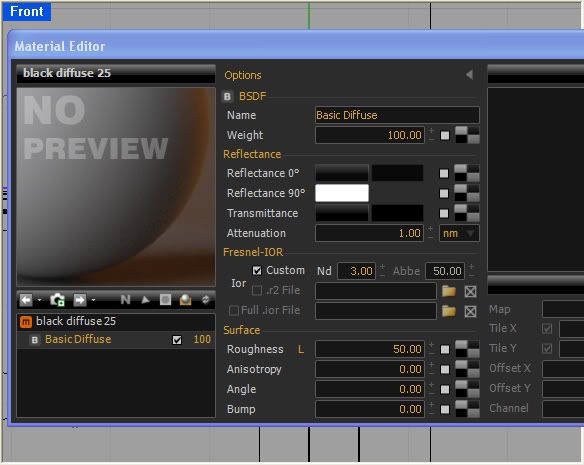- Tue Aug 19, 2008 4:41 pm
#278508
Hi again everyone: I am having a strange issue (strange to me at least). I am lighting a model using an .mxi texture of a lightbox- just an image I made in Gimp of a diffused white ellipse, and 3 emitters.
The problem is that I have a very dark area that seems to follow my camera around. In the first image you will see a very dark area at the bottom of my shot.

So I zoomed my view out to see if I could diagnose the problem- I have moved lights around, base platform around and still no matter what I always have the dark area at the bottom of my shot.

I thought that I could just zoom in on my model a little and I would avoid this dark spot but to no avail it just turns out as in the first pic.
I then thought that the dark spot was a shadow from the 3 spherical emitters that I have over top of my scene so I made them into transparent emitters so they wouldn't cast a shadow. Again with the same results. Here is a shot of my set up

And here is a rendered view of my lighting set up from the outside of my scene.

Any of you folks have any idea where I am going wrong. Thanks as usual!!!
Cary
The problem is that I have a very dark area that seems to follow my camera around. In the first image you will see a very dark area at the bottom of my shot.

So I zoomed my view out to see if I could diagnose the problem- I have moved lights around, base platform around and still no matter what I always have the dark area at the bottom of my shot.

I thought that I could just zoom in on my model a little and I would avoid this dark spot but to no avail it just turns out as in the first pic.
I then thought that the dark spot was a shadow from the 3 spherical emitters that I have over top of my scene so I made them into transparent emitters so they wouldn't cast a shadow. Again with the same results. Here is a shot of my set up

And here is a rendered view of my lighting set up from the outside of my scene.

Any of you folks have any idea where I am going wrong. Thanks as usual!!!
Cary



 - By Edward Leibnitz
- By Edward Leibnitz